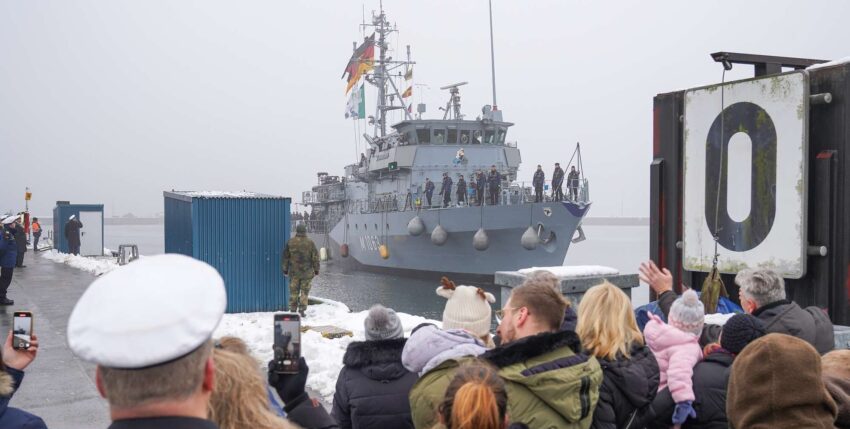From a press release by the Rostock Naval Command:
The minehunting boat "Bad Bevensen" of the 3rd Minehunting Squadron has been part of NATO's Standing NATO Mine CounterMeasures Group 1 for the past five months. It was also part of the Very High Readiness Joint Task Force Maritime for the North and Baltic Seas. Under the command of Corvette Captain Kevin Linken, the almost 30-year-old boat called at 16 harbours in nine countries in five months, covered almost 10,000 nautical miles and removed eight contaminated sites (mines). For the "Bad Bevensen", 2024 begins with a lay-up in the shipyard.
Background information
In addition to the missions mandated by the German Bundestag, the German Navy is constantly involved in NATO's four multinational naval groups. Incidentally, it is the only organisation in Europe that deploys its units to each of the four groups.

Participation in NATO organisations is part of Germany's commitment to the Alliance, even in peacetime. NATO organisations have existed for decades. They are only very roughly limited regionally.
This is another reason why they are rapidly available maritime response forces with which the alliance can operate flexibly in the event of crises or conflicts. The naval units are therefore part of the NATO Response Force (NRF). In this formation, they are the naval component of the Very High Readiness Joint Task Force (VJTF) - the spearhead of NATO, which is permanently ready for deployment. The requirement: to be ready within 48 to 72 hours to deploy to wherever they are needed. Two of the units are capable of protecting large areas of sea lanes, while the other two specialise in defending against sea mines.
In addition to its operational role, the NRF can be utilised for increased cooperation in training and exercises. The NATO Response Force has also been strengthened as part of the adaptation and reassurance measures adopted by NATO. It now comprises up to 40,000 soldiers.










